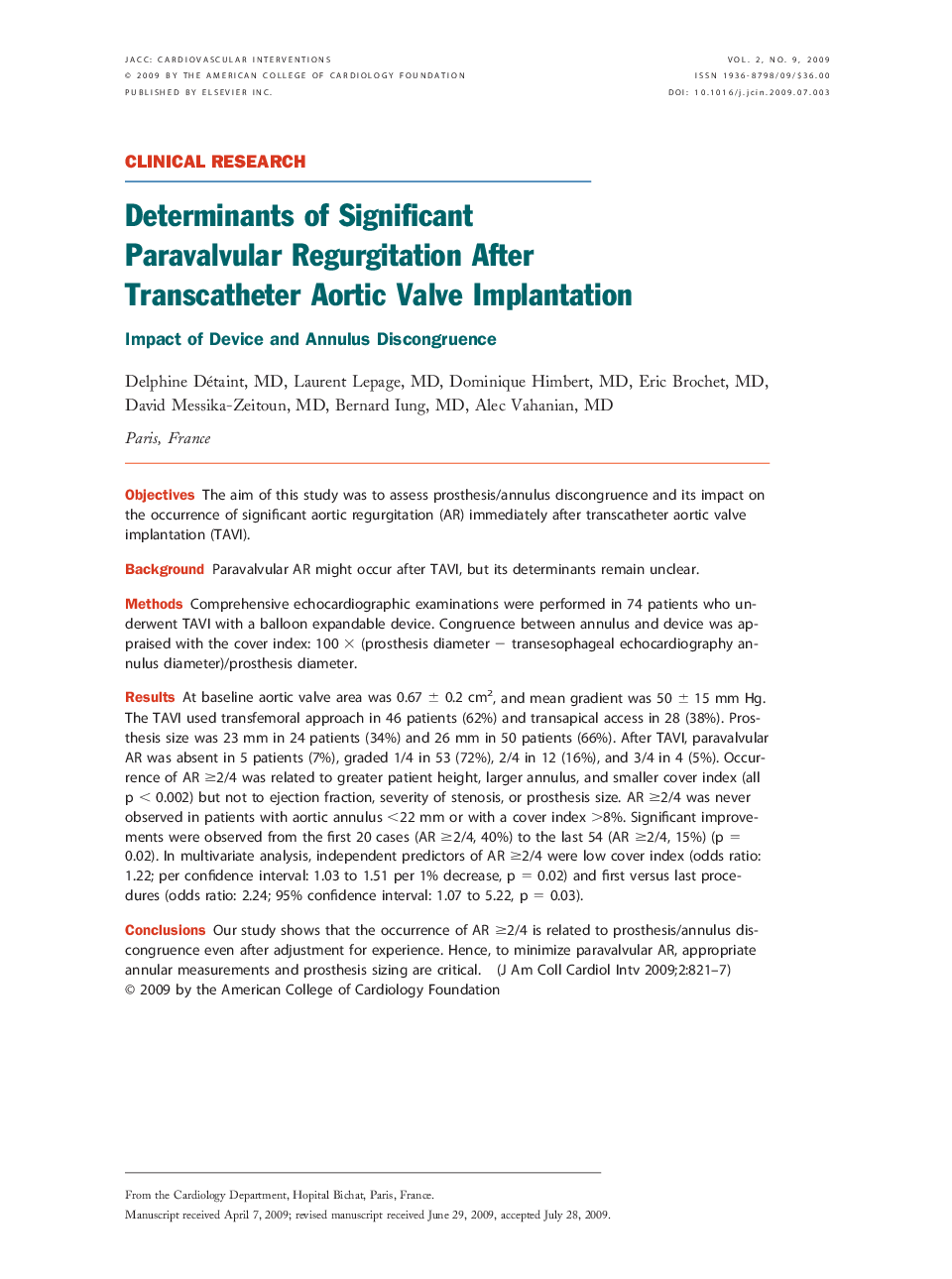| کد مقاله | کد نشریه | سال انتشار | مقاله انگلیسی | نسخه تمام متن |
|---|---|---|---|---|
| 2942055 | 1177099 | 2009 | 7 صفحه PDF | دانلود رایگان |

ObjectivesThe aim of this study was to assess prosthesis/annulus discongruence and its impact on the occurrence of significant aortic regurgitation (AR) immediately after transcatheter aortic valve implantation (TAVI).BackgroundParavalvular AR might occur after TAVI, but its determinants remain unclear.MethodsComprehensive echocardiographic examinations were performed in 74 patients who underwent TAVI with a balloon expandable device. Congruence between annulus and device was appraised with the cover index: 100 × (prosthesis diameter − transesophageal echocardiography annulus diameter)/prosthesis diameter.ResultsAt baseline aortic valve area was 0.67 ± 0.2 cm2, and mean gradient was 50 ± 15 mm Hg. The TAVI used transfemoral approach in 46 patients (62%) and transapical access in 28 (38%). Prosthesis size was 23 mm in 24 patients (34%) and 26 mm in 50 patients (66%). After TAVI, paravalvular AR was absent in 5 patients (7%), graded 1/4 in 53 (72%), 2/4 in 12 (16%), and 3/4 in 4 (5%). Occurrence of AR ≥2/4 was related to greater patient height, larger annulus, and smaller cover index (all p < 0.002) but not to ejection fraction, severity of stenosis, or prosthesis size. AR ≥2/4 was never observed in patients with aortic annulus <22 mm or with a cover index >8%. Significant improvements were observed from the first 20 cases (AR ≥2/4, 40%) to the last 54 (AR ≥2/4, 15%) (p = 0.02). In multivariate analysis, independent predictors of AR ≥2/4 were low cover index (odds ratio: 1.22; per confidence interval: 1.03 to 1.51 per 1% decrease, p = 0.02) and first versus last procedures (odds ratio: 2.24; 95% confidence interval: 1.07 to 5.22, p = 0.03).ConclusionsOur study shows that the occurrence of AR ≥2/4 is related to prosthesis/annulus discongruence even after adjustment for experience. Hence, to minimize paravalvular AR, appropriate annular measurements and prosthesis sizing are critical.
Journal: JACC: Cardiovascular Interventions - Volume 2, Issue 9, September 2009, Pages 821–827